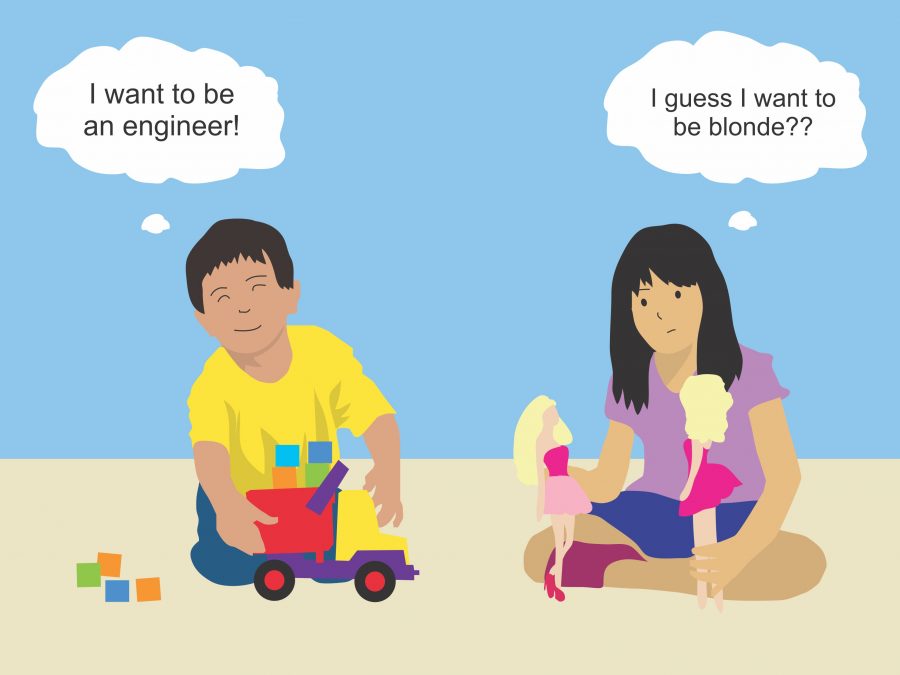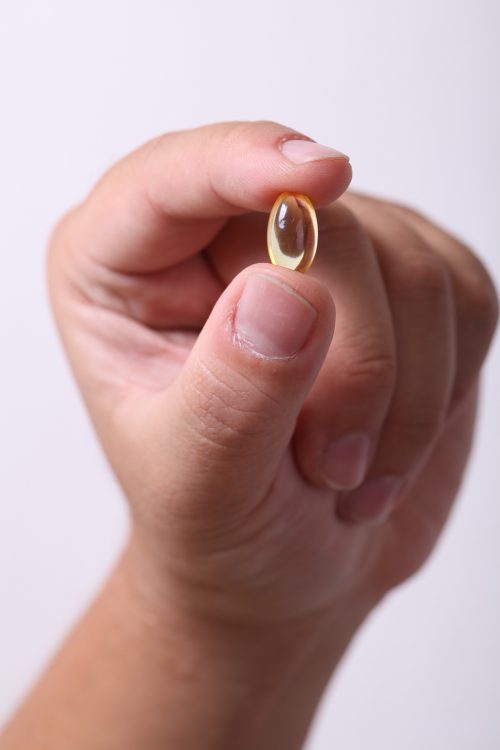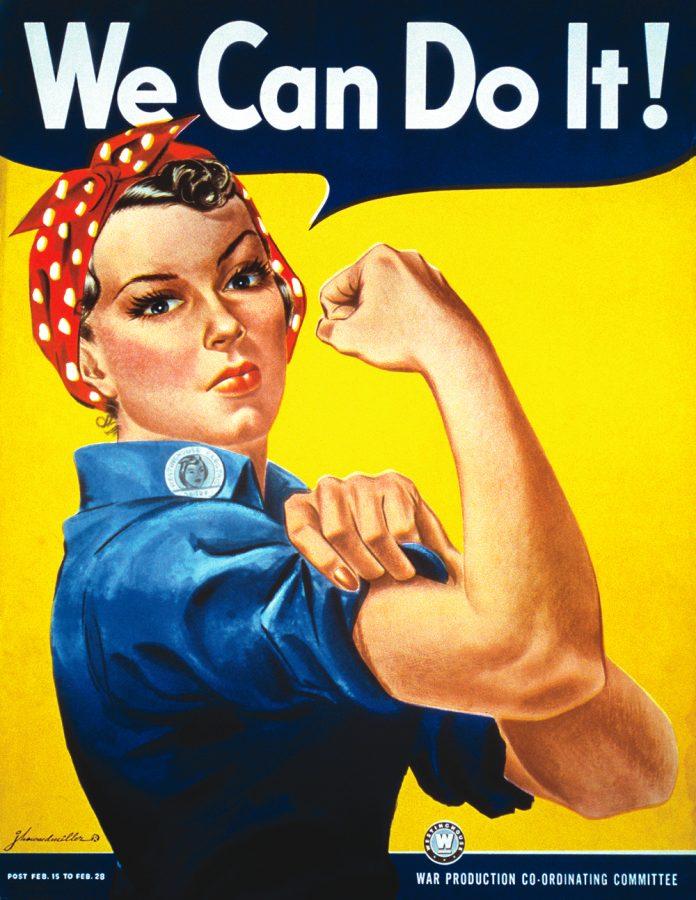art by Erin Barchet
On Christmas morning, millions of children across the world will race to the tree in search of gift-wrapped toys. A few decades ago, a little girl might have received a pretty doll, while her brother entertained himself with a new train set or action figures.
Not anymore, hopefully.
This year, Target joined Walmart and Toys ‘R’ Us by eliminating gender specific toy sections in their stores. Just a few weeks ago they removed gendered labels on online toy sales as well. This a tremendous step in the right direction and begs the question: why do “gender specific toys” even exist?
[divider top=”no”]
READ ANOTHER OPINION ABOUT GENDER STEREOTYPING: Boys can play with Barbies, too
[divider top=”no”]
No child is born with a propensity toward a certain type of toy because of their gender; the reason there seems to be a gender divide in toy presence is because little boys and girls are socialized from a very young age to think certain toys are acceptable and others are not.
Unfortunately, the kinds of toys young boys and girls are pushed toward seem to reflect gender harmful norms. On online retailer Amazon’s ‘Boy Toys’ section, one can find links directing them to action figures, comics and superhero toys. The girls’ section promotes fashion dolls, baby dolls and dollhouses. Featured brands on the girls’ toys page include Barbie, Littlest Pet Shop and Hello Kitty. The boys’ page is splashed with Minecraft, Star Wars and Lego logos.
[quote]No child is born with a propensity toward a certain type of toy because of their gender.[/quote]
As Minecraft and Legos both contain elements of engineering and construction, it might be no surprise that women only make up 13 percent of engineers in the workforce, according to the National Girls Collaborative Project. How can young women want to enter engineering when the majority never learned to love it as a child? Instead, girls are pushed toward pretty dolls, which don’t exactly translate to a career in the sciences.
The negative impact of gender-specific advertising isn’t restricted to female children. Research published by Dr. Isabelle Cherney of Creighton University showed that female-stereotyped toys caused children to engage in more complex play, while male-stereotyped toys did not have the same effect.
The fact of the matter is that so-called “girl” or “boy” toys all have their unique benefits and drawbacks. A doll might help a child play more creatively and develop storytelling abilities while a building set can lend a foundation for logical thought and reasoning, all skills that should be accessible to both boys and girls.
[box title=”Girls in K-12 education” box_color=”#2bb673″ title_color=”#000000″ radius=”0″]1. The percentage of females taking precalculus/analysis (37%) was higher than that of males (34%), as was the percentage of females taking algebra II (78% compared to 74%).
2. More females than males took advanced biology (50% versus 39%), while males took physics at higher rates than females (42% versus 36%).
3. Males were 6 times more likely to have taken engineering (6% versus 1%).
4. Boys performed slightly better than girls in mathematics, but larger gaps exist between students of different racial/ethnic backgrounds or family income. [/box]
information source: https://ngcproject.org/statistics
[gap height=”2″]
As parents and older siblings get ready to do some last minute shopping for the young ones in their families, it’s important to consider new possibilities. Maybe little Suzy will enjoy the world of Minecraft, while David might have fun with a crafting kit. Limiting a child’s interests before they a have a chance to explore what they like themselves is harmful in the long-run. So this holiday season, take a chance and ignore the ‘girl’ or ‘boy’ labels on the shelves. Give the gift of play, with no gendered strings attached.
Categories:
Let girls play with Legos
December 19, 2015
2
0
More to Discover





















































































Allie Pigg • Jan 21, 2016 at 12:30 pm
I’ve never thought about gender differences in toys–hmm. This story made me wonder which toys I would play with as a child and also makes me pay attention to the children around me, and identifying if there is a large contrast in gender and the toys they play with.
Emily Oba • Jan 18, 2016 at 12:00 pm
I like how there is a box specifically for the statistics. It really brought my attention to it.